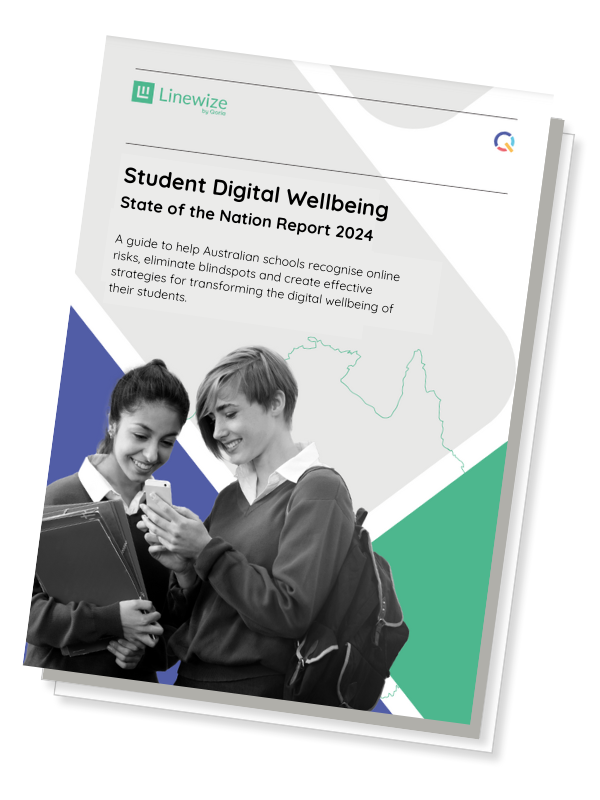The digital landscape evolves at breakneck speed, and within its constant change, our children navigate both exciting opportunities and hidden dangers. As educators, we know the critical importance of fostering online safety and wellbeing in our schools. Yet, amidst a constant barrage of information, conflicting opinions, and ever-evolving threats, it can feel overwhelming to keep pace and understand who to trust, or what information to listen to. Misinformation is a key risk educators are trying to protect students from, but ironically, battle with themselves on a day to day basis in their own roles.
Why trust matters more than ever
The need for trustworthy guidance in navigating the digital world has never been stronger. Inappropriate content, toxic online behaviours, digital distraction, and cyber security are just a few of the potential pitfalls lurking online, that dramatically impact the wellbeing of entire school communities. The sheer volume of information educators now need to consume to keep pace with their workloads, can also, quite frankly, be paralysing. In fact, it's so common, there is a term to describe this phenomenon - “Infobesity.” However difficult it may be, the risk of relying on outdated information, anecdotal experiences, or sensationalist headlines can ultimately lead to ineffective interventions for schools who focus on the wrong areas. With a very real lack of time to meticulously implement and evaluate strategic priorities, schools are often left guessing how to discern the best path forward.
We’ve done the hard work for you
At Linewize by Qoria, we focus on how we can truly help educators and school communities thrive in the digital space. With insights from 27,000 schools and 22 million students globally, our team researches and understands the digital world that the modern day student exists within, so educators don’t have to. In our brand new whitepaper, Student Digital Wellbeing: State of the Nation Report 2024, we’ve compiled a roadmap to the ever-changing digital landscape for schools. It comprises the expertise of global subject matter experts in online safety, technology, education, and psychology, who know where schools should be focusing their attention, to achieve the best results.
Here's a sneak peek at what you'll find:
- The latest online safety trends and statistics: Understand the evolution of the digital environment from 2023 to 2024, and the true threats students are now facing.
- Addressing digital literacy: Discover the hidden barriers to equipping students with critical thinking skills, media literacy, and responsible online behaviour.
- Identifying and responding to cyberbullying behaviours: Gain practical tools to recognise and address cyberbullying trends and behaviours effectively, to proactively protect students from harm.
- Promoting positive mental health and wellbeing outcomes: Understand the impact of online experiences on students mental health, and discover strategies to support their emotional wellbeing.
- Making the invisible risks visible: Learn how to utilise technology as a safety enabler, ensuring no child falls through the cracks.
Uncovering digital visibility as a strategic imperative for schools
Throughout our investigation for this report, we’ve identified visibility as a key strategic driver for schools, and earmarked technology as the new world enabler for harm minimisation. As the report explains, when schools have visibility over the concerning behaviours exhibited by their students, it empowers them to proactively protect them based on their individual needs. Visibility allows schools to:
- Identify patterns and behaviours that might indicate stress, bullying, or other online risks.
- Detect problems they might otherwise miss, even in seemingly low risk students.
- Intervene earlier and offer support to students who are struggling online, offline or both.
Often, vulnerable children exhibit unique online behaviours, making them easier to identify once we remove the over reliance of physical world observations, and lift the veil on the online ones. Visibility allows schools to spot these signs and offer timely support before problems escalate. This paves the way for schools to provide positive guidance towards responsible online behaviour, creating a safer digital environment, and ultimately, promote students overall wellbeing. As educators know all too well, true wellbeing is only achieved once we extend beyond the classroom walls.
Partnering with schools in their online safety journey
We’re passionate about partnering with schools, so reports like this don’t just point out problems; it equips educators with clear, actionable steps to tackle online safety challenges head on. It also helps translate the complex into the practical, by tapping into the minds of leading experts in technology and education to deliver the inside knowledge educators need to stay ahead of online risks, and keep students safe in the ever evolving digital world.
This report also empowers educators to be a reliable and trusted source for students and their parent communities and equips them with the knowledge and tools to address students' true concerns accurately and confidently. Whether it's gaining the essential information to respond to reports of online risk, or understanding students' influencers or barriers in online environments, educators will acquire the bespoke knowledge necessary to effectively support their students, now and into the future.
Dive in and discover the tools and strategies needed to move beyond awareness and into action. Download the report and empower your school community to manage the online world of today, tomorrow. As we say at Linewize - none of us is as powerful as all of us.
[Get your copy now] Do you have an idea for a story?Email [email protected]
 Education Review The latest in education news
Education Review The latest in education news

